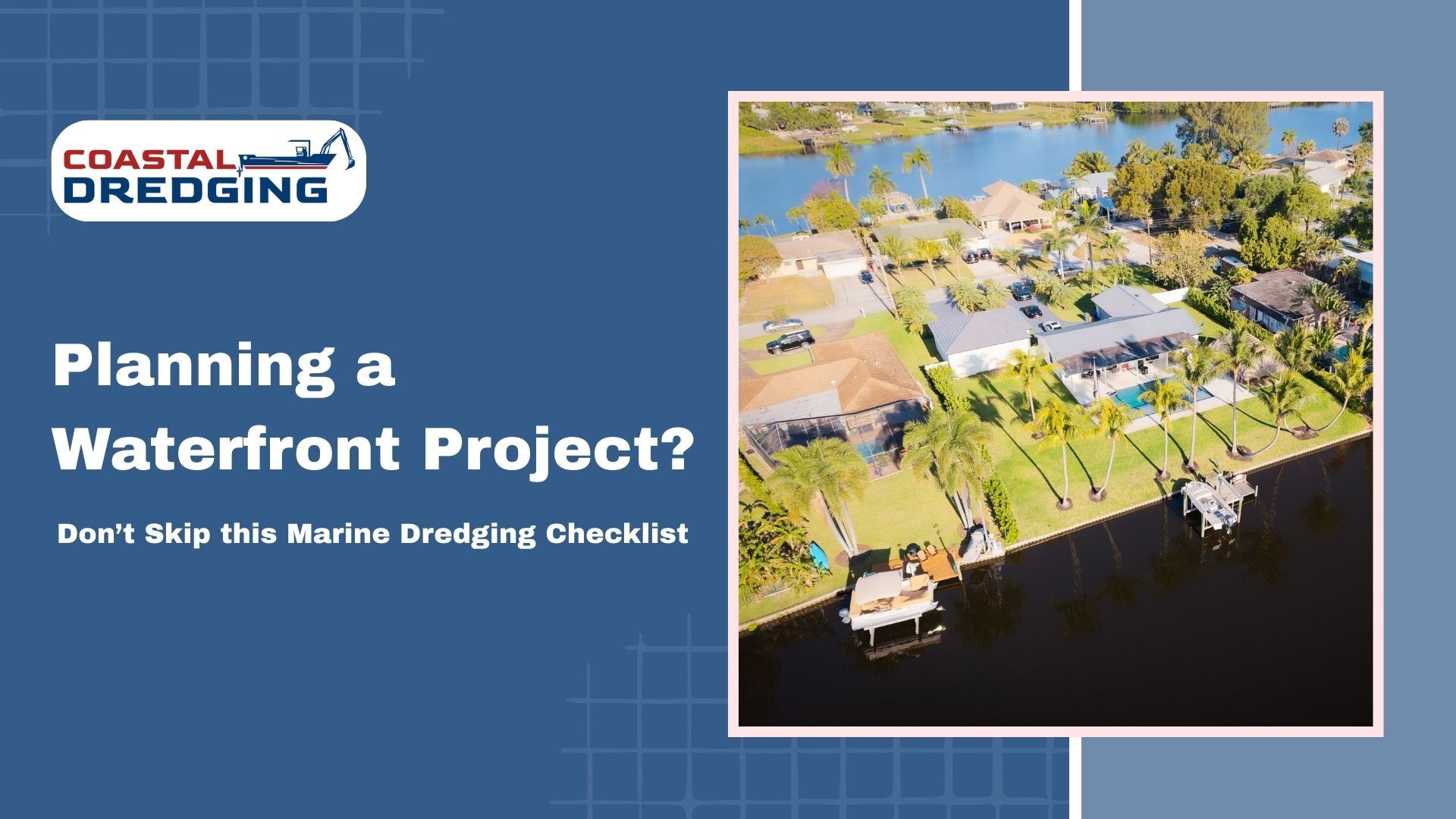
Thinking about building or upgrading your waterfront property? Whether you’re planning a private dock, a marina, a seawall, or a commercial waterfront development, there’s one crucial step that often gets overlooked until it’s too late: marine dredging.
Skipping this vital process can stall your project, inflate your costs, or even shut it down completely. But you don’t need to stress, because we’ve put together a simple, practical marine dredging checklist to help you stay ahead of the game. At Coastal Dredging, we specialize in making marine dredging efficient, tailored to your unique needs, and as painless as possible. So, let’s dive in.
Before we get into the checklist, let’s break down what marine dredging is. Marine dredging involves the removal of sediments, debris, and other materials from the bottom of water bodies, such as lakes, rivers, harbors, or coastal areas. It’s essential for maintaining navigable waterways, improving water flow, preventing flooding, and preparing underwater areas for construction. If you’re working on a waterfront project, marine dredging might be needed to:
In short, it clears the path, literally, for your project to succeed.
Are you building a new dock? Expanding an existing marina? Trying to stop shoreline erosion? The purpose of your project will determine the type and scope of dredging required. Take time to write down the specific outcomes you want:
When you consult with us at Coastal Dredging, we use this info to build a custom dredging plan that fits your project like a glove.
Before a single bucket hits the water, it’s critical to assess the current conditions at your site:
Our team performs detailed surveys and testing to map out the underwater terrain and identify potential red flags.
Let’s be real, dealing with regulations isn’t the most exciting part of your project. But it’s non-negotiable. Marine dredging often requires multiple permits from federal, state, and local agencies. These might include:
Failing to get the right permits can lead to fines, delays, and forced shutdowns. At Coastal Dredging, we’ve got this down for you. We handle the permitting process for you, saving you the paperwork headache and keeping your project compliant from day one.
Not all dredging is the same. The method we use depends on your project goals and the site conditions. Common marine dredging methods include:
We help you select the best approach to get the job done safely, efficiently, and cost-effectively.
So, where does all that dredged material go? That’s something you need to figure out before the dredging starts. Depending on the type and condition of the sediment, options may include:
We can help you create a sustainable and approved disposal or reuse plan that aligns with your environmental goals.
Timing is everything. Some dredging projects can only be done during specific months due to:
Coastal Dredging will help you schedule your marine dredging project for the ideal window, minimizing disruption and maximizing efficiency.
Dredging costs can vary widely depending on:
We provide clear, upfront quotes so there are no surprises. Because we’ve seen it all, we help you plan for those “just-in-case” scenarios that could otherwise throw your budget off track.
Marine dredging isn’t just about big machines and digging deep. It’s also about keeping your team, the environment, and the community safe.
Our crews are fully trained in:
We operate with full insurance and a proven track record of safety on the water.
Here’s the deal: the right marine dredging partner can make or break your project.
At Coastal Dredging, we’re not just contractors. We’re problem-solvers, permit wranglers, underwater navigators, and your go-to team for all things dredging. We bring years of experience, top-tier equipment, and a reputation built on trust and results. If you’re planning a waterfront project, don’t wait until you hit a snag to think about dredging. Bring us in early, and we’ll ensure you avoid pitfalls and get your project moving smoothly.
Got a project in mind? Let’s talk! Contact Coastal Dredging today for a free consultation and let us show you why we’re the best in the marine dredging business. Visit us at coastaldredgingco.com or give us a call; we’re here to help you break ground (and water) the right way.
Dredging is primarily focused on removing both inorganic and organic sediments to restore pond depth. On the other hand, hydro-raking provides a more holistic and selective approach to removing organic matter, aquatic vegetation, associated root structures, and maintaining or restoring pond depth.
Dredging is costly because it is a technical process that requires specialized expertise and equipment for operation. Equipment costs are also a significant budget factor.